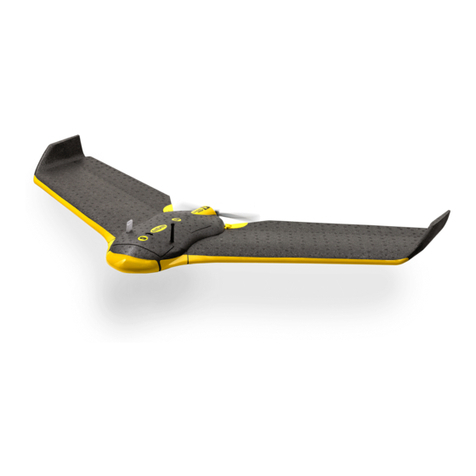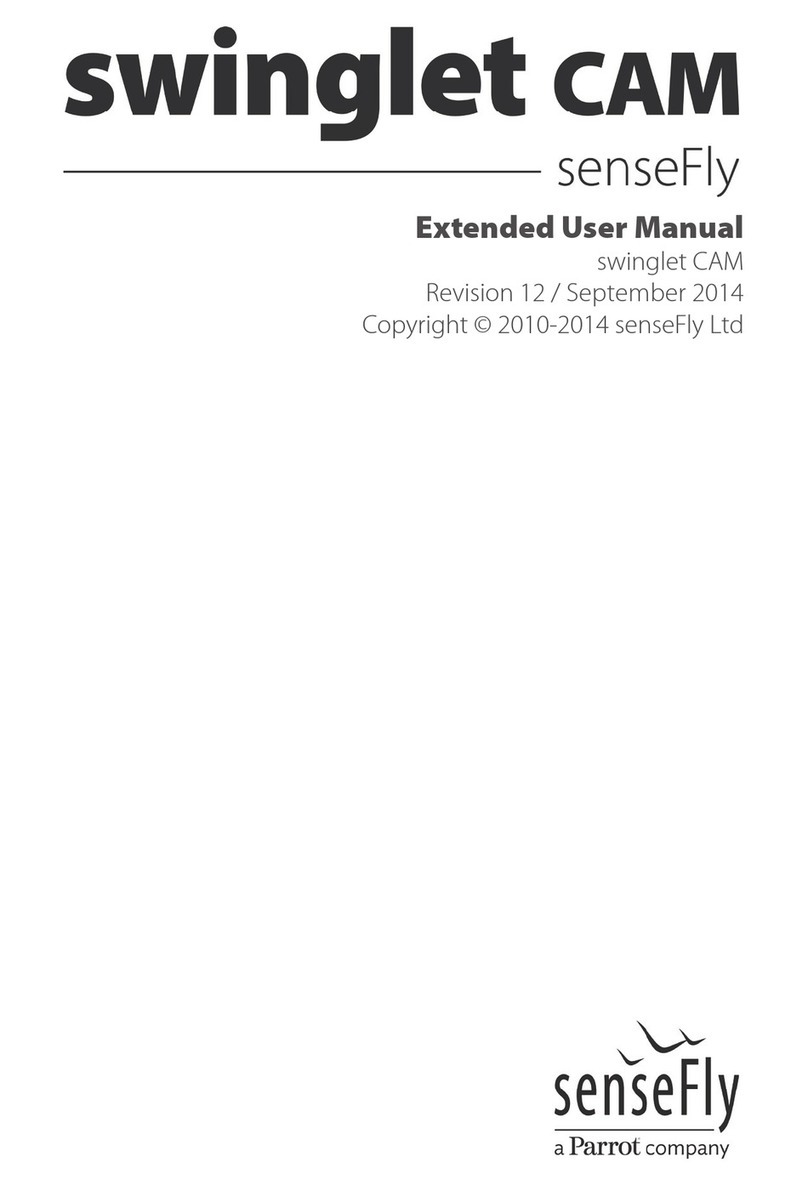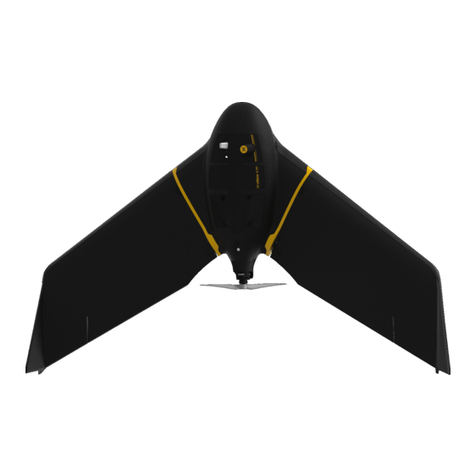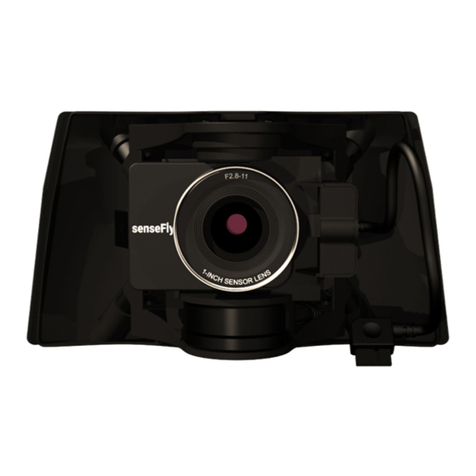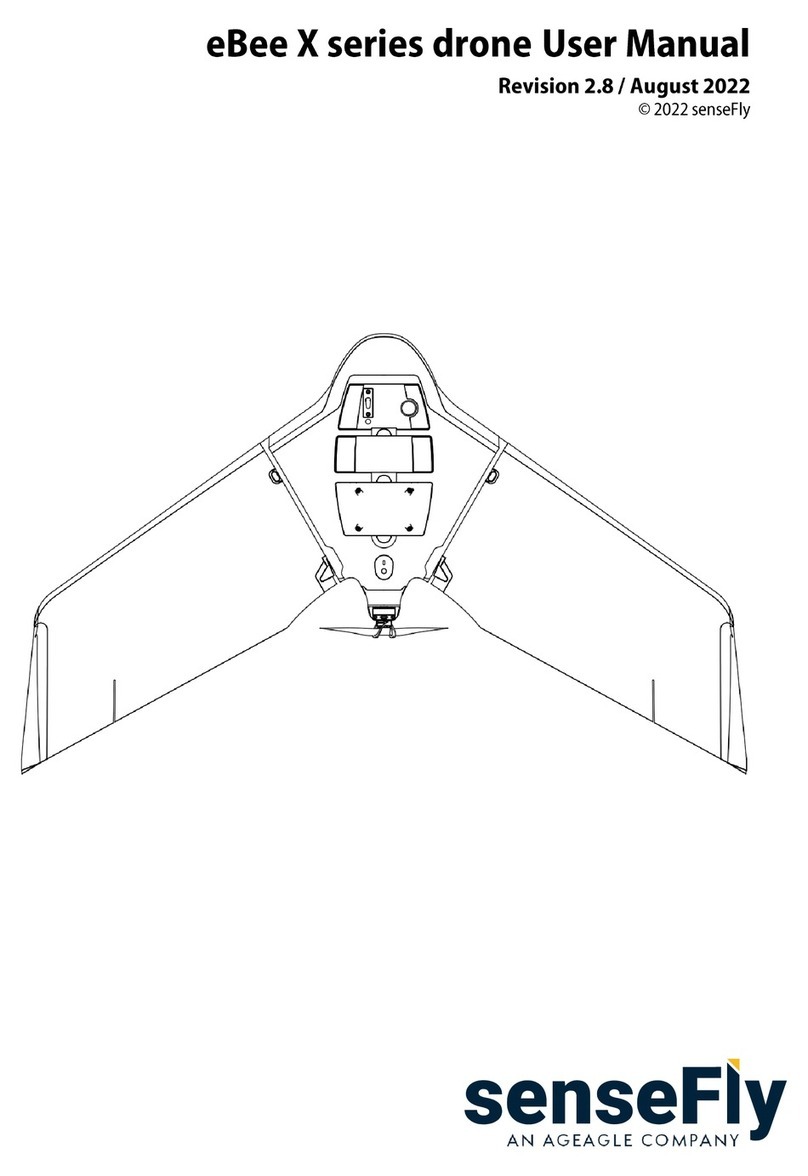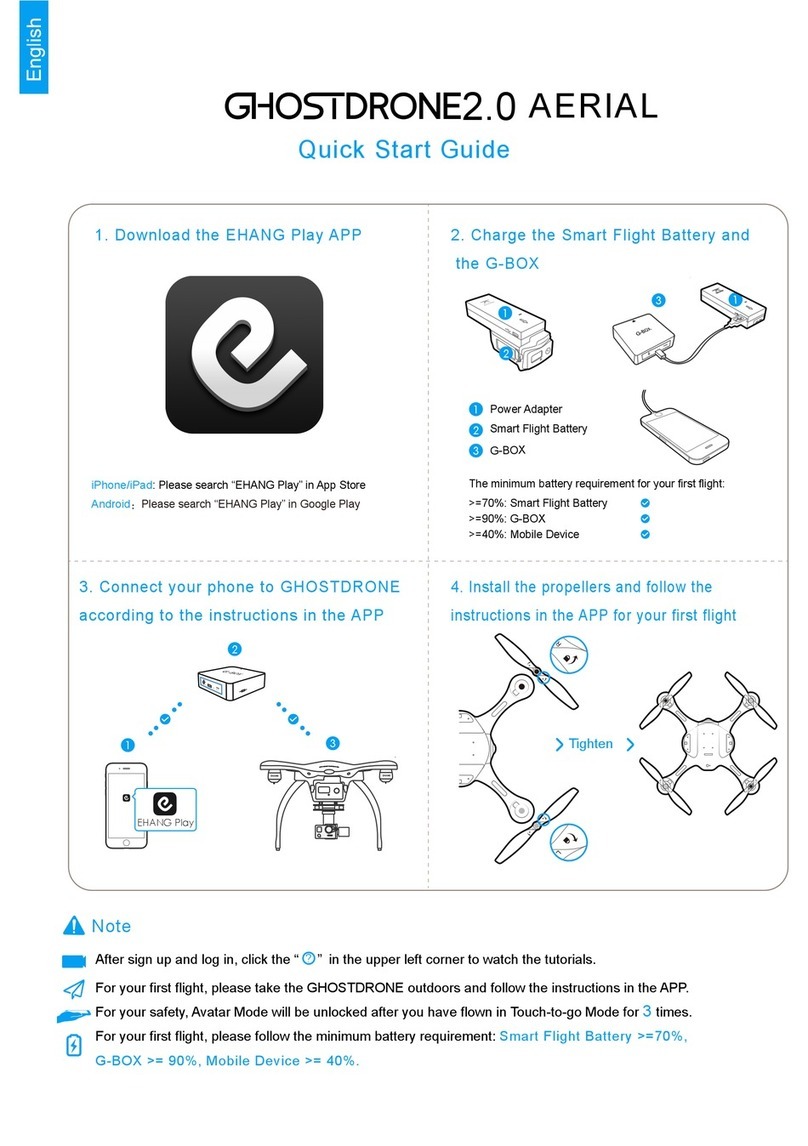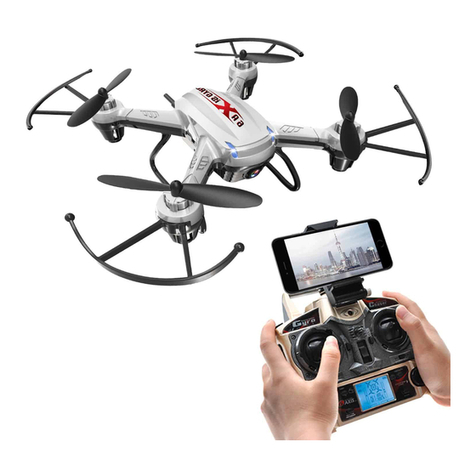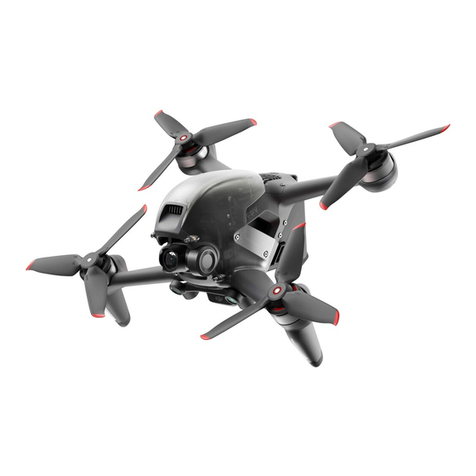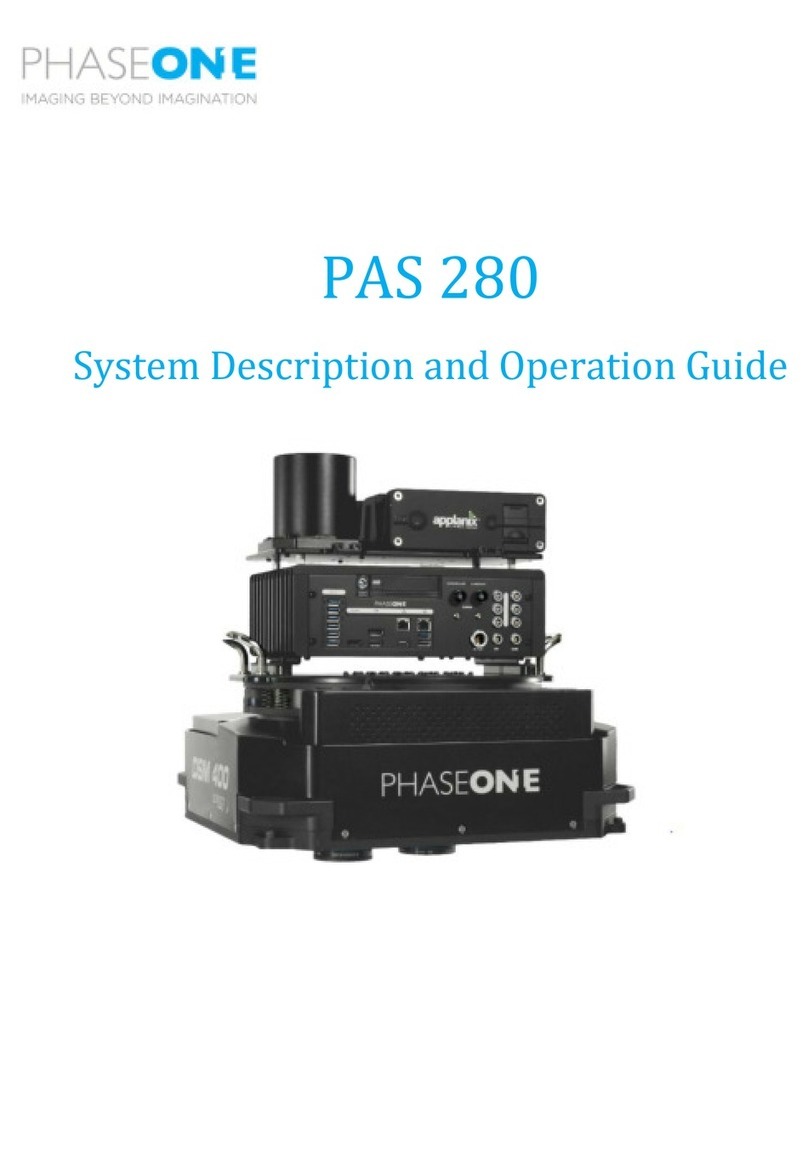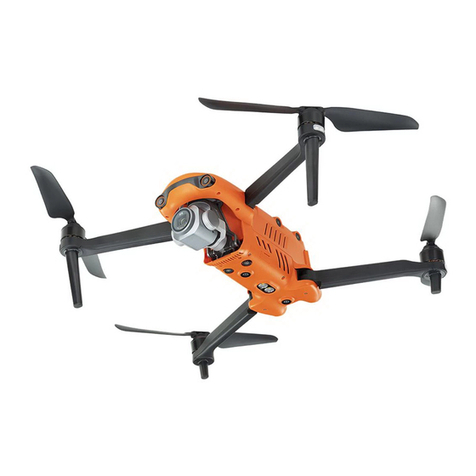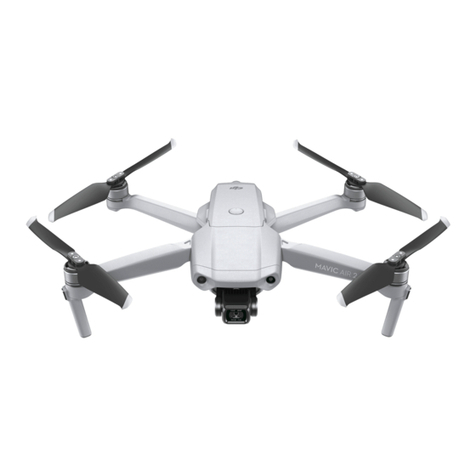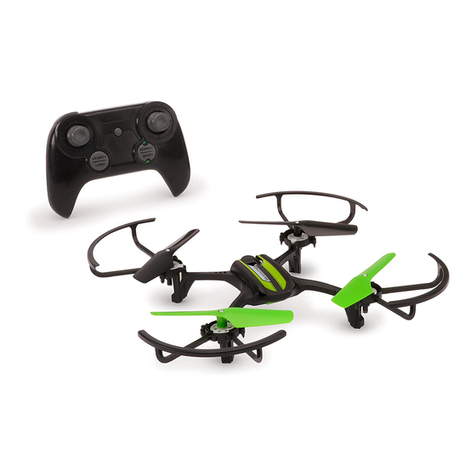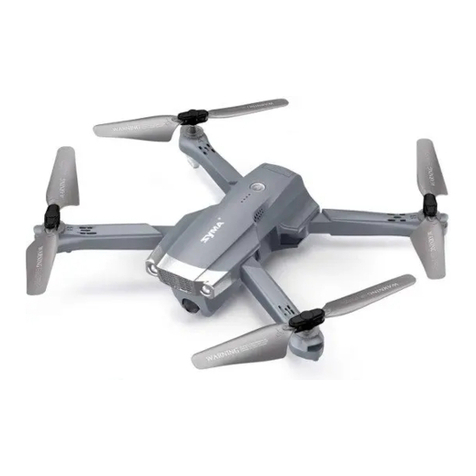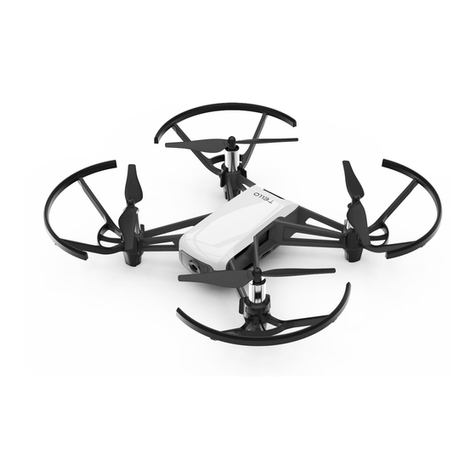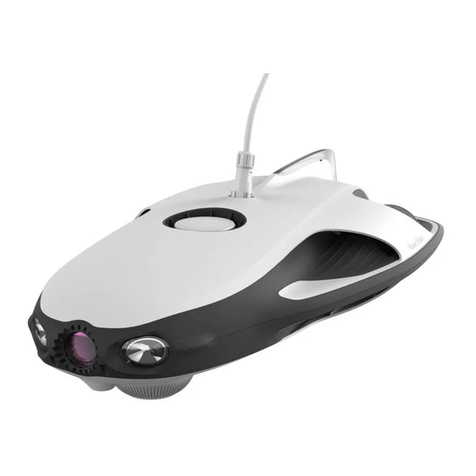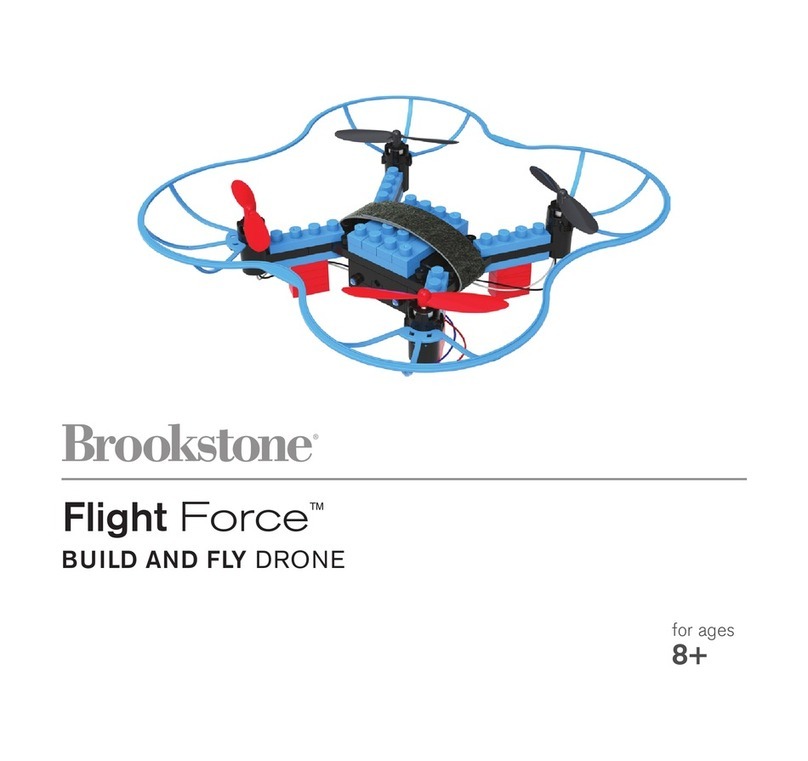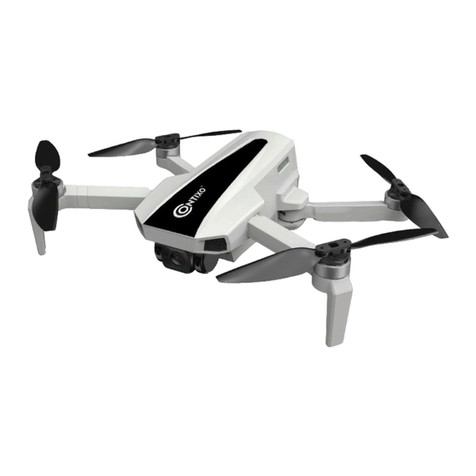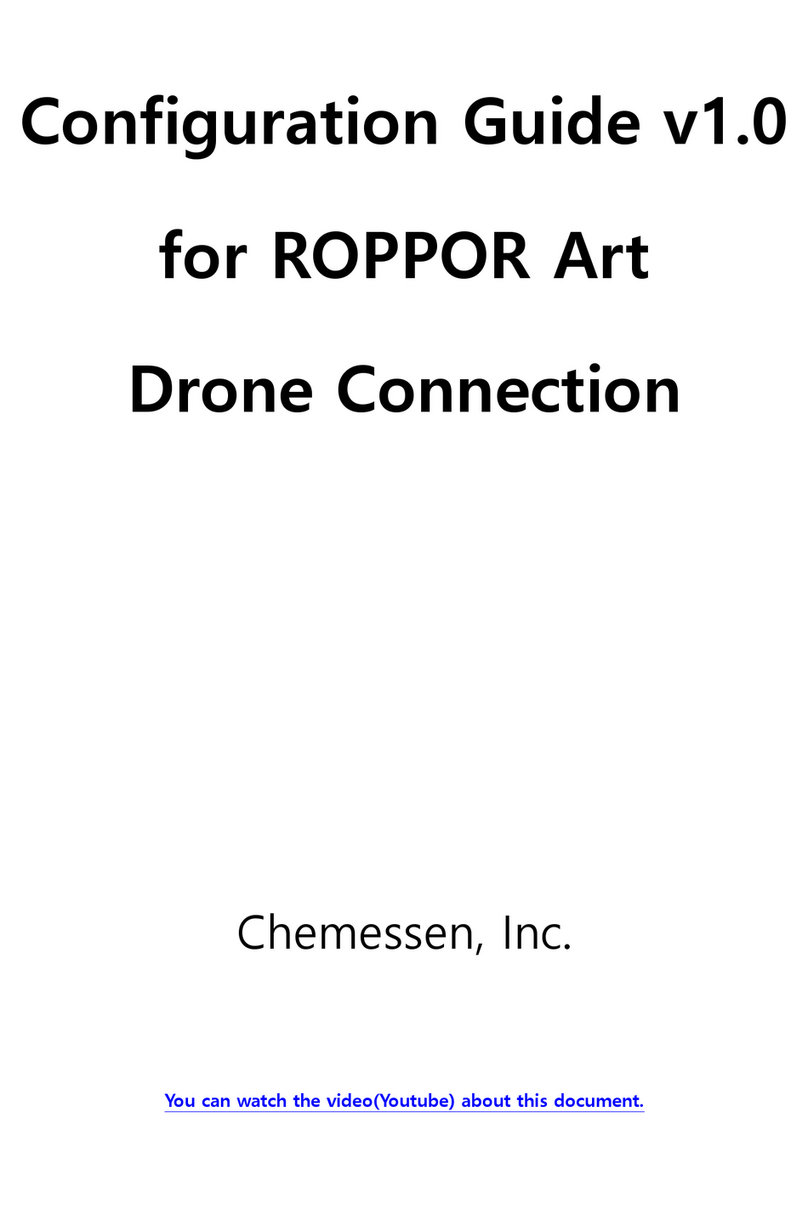senseFly EBEE RTK User manual

Extended User Manual
eBee RTK
Revision 3 / December 2014
Copyright © 2010-2015 senseFly Ltd

GENERAL INFORMATION
READ THIS USER MANUAL CAREFULLY BEFORE USING A SENSEFLY LTD PRODUCT.
senseFly Ltd products are intended for professional use only.
Applicable Regulations
senseFly Ltd products are subject to Civil Aviation regulations. Regulations may vary depending on the country
where you intend to operate your product.
ANY USE OF SENSEFLY LTD PRODUCTS IN BREACH OF THE LAW OF THE COUNTRY WHERE YOU OPERATE THE PRODUCT
IS UNDER YOUR SOLE RESPONSIBILITY.
INFORM YOURSELF BEFORE USING THE PRODUCT. SOME COUNTRIES MAY HAVE LAWS THAT LIMIT THE USE OF UN-
MANNED AIRCRAFT TO ‘LINE-OF-SIGHT’ OPERATIONS AND/OR PROHIBIT THE USE OF UNMANNED AIRCRAFT AT ALL
OR IN SPECIFIC AREAS.
Privacy
Recording and circulating an image of an individual may constitute an infringement of their image and privacy for
which you can be liable. Ask for authorization before taking pictures of an individual, particularly if you want to keep
your recordings and/or circulate images on the Web or any other medium. Do not circulate degrading images or
ones that could undermine the reputation or dignity of an individual. Check that your use of the cameras on board
senseFly Ltd products comply with the legal provision on privacy in the country where you operate your product.
Limited Warranty
SenseFly Ltd warrants that the product will be free from defects in material and workmanship for a period of twelve
(12) months from the date of delivery. SenseFly Ltd further warrants that the product will perform substantially in
accordance with its specification. During the warranty period senseFly Ltd’s sole liability shall be at senseFly Ltd’s
sole option, either to repair or to replace the defective product with another product or a product with similar spec-
ifications, at no charge, or to reimburse the purchase price of the product, or if repair or replacement is not possible,
issue a credit note; provided however, that the defect has been confirmed by senseFly Ltd and that the defective
product is returned to senseFly Ltd in accordance with the support and repair form together with all required flight
logfiles.
Warranty does not apply, without limitation, in case: a) the products are not stored and used according to their
specifications, b) the products are damaged due to carelessness, negligence, or wrong use by the user, and c) for
defects due to normal wear and tear including, but not limited to, deterioration to the airframe after first flight,
normal degradation, misuse, moisture or liquids, proximity or exposure to heat, accidents, excessive strain, abuse,
neglect, misapplication, repairs or modifications made by third party other than senseFly Ltd, damage due to manual
operation, damage due to take-off or landing location with obstacles, damage due to low altitude flight, damage due
to loss of data radio connection, damage due to strong wind, rain or humidity, or other causes for which senseFly Ltd
has no control.

THE FOREGOING WARRANTIES ARE IN LIEU OF ALL WARRANTIES, EITHER EXPRESSED OR IMPLIED, INCLUDING WITH-
OUT LIMITATION ANY IMPLIED WARRANTY OF MERCHANTABILITY OR FITNESS FOR A PARTICULAR PURPOSE, AND OF
ANY OTHER OBLIGATION ON THE PART OF SENSEFLY LTD.
Limitation of liability
TO THE EXTENT PERMITTED BY APPLICABLE LAW, IN NO EVENT WILL SENSEFLY LTD BE LIABLE FOR ANY LOSS OF REV-
ENUE, LOSS OF PROFIT, LOSS OF DATA, OR INDIRECT, SPECIAL, INCIDENTAL OR CONSEQUENTIAL DAMAGES, EVEN IF
SENSEFLY LTD HAS BEEN NOTIFIED OF THE POSSIBILITY OF SUCH DAMAGES, AND WHETHER THIS LIABILITY ARISES
FROM A CLAIM BASED ON CONTRACT, WARRANTY, TORT OR OTHERWISE, WITH THE EXCEPTION OF GROSS NEGLI-
GENCE AND DEATH.
YOU SHALL AT ALL TIMES OPERATE THE PRODUCT IN AREAS OR UNDER CIRCUMSTANCES SO AS TO GUARANTY SE-
CURITY AND SAFETY OF PEOPLE, PROPERTY AND ANIMALS.
Disposal of this product at the end of its life
At the end of this product’s life, please do not dispose of this product in your general household waste.
Instead, in order to prevent possible harm to the environment or human health from uncontrolled waste
disposal, please dispose of this product separately in accordance with your local laws and regulation. For
more information on the separate collection systems for waste electrical and electronic equipment that
are available for consumers, near your home, free of charge, please contact your local municipal authority.
You can also contact senseFly Ltd or the reseller from which you purchased your drone who may provide recycling
services or be part of a recycling scheme.
Copyrights
senseFly Ltd reserves the right to make changes to specifications and product descriptions contained in this docu-
ment at any time without notice. Please consult www.sensefly.com for the latest release.
Copyright © 2015 senseFly Ltd. All rights reserved. REPRODUCTION, USE OR DISCLOSURE OF ALL OR IN PART OF THIS
MANUAL TO THIRD PARTIES WITHOUT THE PRIOR WRITTEN PERMISSION OF SENSEFLY LTD IS STRICTLY PROHIBITED.

Welcome to your eBee RTK
Congratulations on your purchase of the eBee RTK, a complex and powerful yet
intuitive autonomous mapping system. We take great care to develop and design
the best possible hardware and software tools for quick, high-quality and easy-to-
use 2D and 3D aerial mapping.
The eBee RTK is a fully autonomous survey-grade mapping drone (UAV, RPAS or
UAS). It is capable of in-flight processing of RTK corrections from most leading
brands of GNSS/RTK base stations via its supplied eMotion flight control software
and ground modem. The built-in high-performance GNSS receiver in the eBee RTK
can process GPS and GLONASS L1 and L2 signals. The RTK coordinate correction
data it receives via its ground modem enables precise navigation and the stor-
age of image metadata with RTK-level positional accuracy, without the need for
Ground Control Points (GCPs).

Note: This manual refers to version 2.4 of eMotion and version 3.2
of Postflight Terra 3D software. The eBee RTK requires eMotion 2.4. If
you installed eMotion before purchasing your drone, check the ver-
sion and upgrade if necessary. You can consult the Release Notes for
changes included in more recent versions of the software.

Package contents
eBee RTK
battery packs
wing wingeBee
central body
spare propeller
camera
user manual
ground
modem
eBee RTK
battery charger
EPP
glue
GNSS antenna,
remote control,
cables and propeller
attachment bands eBee RTK battery
charger power
adapter
camera
charger

The standard eBee RTK package contains the following items:
•1x carrying case with foam protection
•1x eBee RTK central body with built-in autopilot
•1x pair of detachable wings
•1x spare propeller
•10x spare propeller attachment rubber bands
•2x Lithium-Polymer battery packs
•1x Lithium-Polymer battery charger (including cables)
•1x 2.4 GHz USB ground modem for radio data link (including USB cable)
•1x 2.4 GHz remote control (including including 3 AA batteries)
•1x modified IXUS/ELPH still camera (including memory card, battery and
charger)
•1x USB cable for interfacing with camera and on-board autopilot
•1x EPP glue
•1x eBee RTK User Manual
•1x camera User Manual
Depending on your order, your package may also include other items, such as
additional payloads. Please verify upon delivery that your package is complete.
In case of a missing item, please contact your eBee RTK reseller immediately.
Caution: The built-in GNSS receiver in the eBee RTK makes it heavier
than the standard eBee. You must therefore only fly your eBee RTK
with the IXUS/ELPH camera provided. senseFly Ltd cannot be held
responsible for any loss or damage caused by flying an eBee RTK with
a different camera installed.

Hardware features
Top face of the eBee
batter
y compartment
ailer
on
winglet
pr
opeller
servo connectio
n
mechanis
m
data link antenna
pitot pr
obe, status LED
wing
camer
a compartment
central body
Bottom face of
the central body
ground
sensor
camera lens hole
Detachable
wing
wing
struts
GNSS/RTK antenna
The eBee RTK is an autonomous flying drone comprised of the following compo-
nents:
•Central body: This is the core of the eBee RTK and includes all the electron-
ics, actuators and communications hardware on-board the drone.
•Wing: The two wings of the eBee RTK are detachable for storage and re-
placement. Each wing has two wing struts and two clips to hold it in place
within the central body.

•Winglets: These structures add aerodynamic stability to the drone while it
is in flight.
•Ailerons: Used to control the eBee RTK while in flight.
•Servo connection mechanism: The ailerons are connected to the servo-
motors within the central body of the drone through this connection mech-
anism.
•Propeller: Used to generate thrust while it is in flight.
Caution: When attached to the motor the propeller spins at high
speeds and can be potentially dangerous if it comes into contact with
exposed skin. Be sure to always keep your hands clear of the propeller
when the battery is attached to the eBee RTK.
•Battery compartment: The eBee RTK is powered by a LiPo (Lithium Poly-
mer) battery stored within the battery compartment.
Caution: Proper care of your battery is essential. Please read section
‘Proper battery care’ on page 154 before using your drone for the first
time.
•GNSS/RTK Antenna: The advanced GNSS antenna, capable of capturing
several GNSS signals, is used for navigation and to increase geo-tagging
precision.
•Camera compartment: The eBee RTK features a built-in camera for taking
aerial images stored within the camera compartment.
•Data Link Antenna: Used by the drone to communicate with the eMotion
software through the USB ground modem.
•Pitot probe: This is the sensor used by the eBee RTK to detect airspeed,
wind and altitude. It must be kept clean and clear of obstructions to func-
tion properly.

•Status LED: This coloured LED displays the current state of the eBee RTK. It
is housed underneath the pitot probe and thus illuminates the entire trans-
parent probe in various colours depending on the drone’s state.
•Ground sensor: The ground sensor, composed of a high-speed optical
sensor and lens assembly, is used to detect the proximity of the ground.

Software features
The eBee RTK package allows you to download and use eMotion∗and
Postflight Terra 3D ∗† at no extra cost.
eMotion is the integrated software package that allows you to interact with your
eBee RTK. Its easy-to-use interface allows you to plan a mapping flight intuitively
from the comfort of your office or directly in the field. Once the drone is launched,
you can use eMotion’s wireless connection with your eBee RTK to track its position,
monitor the progress of your mapping flight and send commands if desired.
Once your eBee RTK returns after an aerial mapping flight it is the turn of Postflight
Terra 3D to process the captured images fully automatically. Postflight Terra 3D is
a full-featured mapping solution: with just a few mouse clicks it can create high-
quality geo-referenced 2D and 3D orthomosaics and digital elevation/surface mod-
els (DEM/DSM). While you are still in the field Postflight Terra 3D analyses the qual-
ity of the captured images and generates an easy to understand report, letting you
know immediately if the data you captured meets your mapping requirements.
∗Software access terms and conditions apply
†Postflight Terra 3D works with eBee images only


Contents
I Quick start guide 19
1 Planning and simulating a flight 20
1.1 Installing eMotion,Postflight Terra 3D, and the ground modem
drivers ............................... 20
1.2 The eMotion interface ....................... 21
1.3 Creating a new flight plan . . . . . . . . . . . . . . . . . . . . . 25
1.4 The mission phase of a flight . . . . . . . . . . . . . . . . . . . . 26
1.5 Simulating your flight . . . . . . . . . . . . . . . . . . . . . . . 28
1.6 Getting ready for a mission . . . . . . . . . . . . . . . . . . . . 29
2 Setting up RTK 31
2.1 Base station compatibility . . . . . . . . . . . . . . . . . . . . . 31
2.2 Setting up your GNSS/RTK base station . . . . . . . . . . . . . . 31
2.3 Setting up reference points for your GNSS/RTK base station . . . 33
2.4 Setting up virtual reference broadcasters . . . . . . . . . . . . . 34
3 Using RTK 36
3.1 Using a local base station . . . . . . . . . . . . . . . . . . . . . 36
3.2 Using your eBee RTK with a virtual reference broadcaster . . . . . 39
3.3 Using your eBee RTK in standalone mode . . . . . . . . . . . . . 39
4 Executing a flight 40
4.1 Weathercheck ........................... 40

4.2 Preparing the eBee RTK forflight.................. 41
4.3 The setup phase of a flight . . . . . . . . . . . . . . . . . . . . . 50
4.4 Take-off............................... 54
4.5 In-flight monitoring and control . . . . . . . . . . . . . . . . . . 57
4.6 Landing............................... 59
4.7 Potential in-flight errors . . . . . . . . . . . . . . . . . . . . . . 59
5 Processing image data 61
5.1 High precision geotagging with the eBee RTK ........... 61
5.2 Importing images and flight data . . . . . . . . . . . . . . . . . 61
5.3 In-field image quality check . . . . . . . . . . . . . . . . . . . . 67
5.4 Creating advanced mapping products . . . . . . . . . . . . . . 69
5.5 Transforming coordinates . . . . . . . . . . . . . . . . . . . . . 69
II Advanced functionalities 71
6 Understanding aerial mapping with the eBee RTK 72
6.1 Waypoints and their properties . . . . . . . . . . . . . . . . . . 72
6.2 Advanced polygonal mission area . . . . . . . . . . . . . . . . . 77
6.3 3D mission planning using elevation data . . . . . . . . . . . . . 78
6.4 Flight visualization in Google EarthTM ............... 80
6.5 Autonomous controller and modes of flight . . . . . . . . . . . . 82
6.6 Linearlanding ........................... 86
6.7 Flying multiple drones at the same time . . . . . . . . . . . . . 91
6.8 Individual photo targets and oblique imagery . . . . . . . . . . 97
6.9 Emergency Manoeuvres . . . . . . . . . . . . . . . . . . . . . . 99

7eMotion in-depth guide 103
7.1 Toolbar............................... 104
7.2 Simulator.............................. 107
7.3 ControlBar............................. 109
7.4 Flight Monitoring tab . . . . . . . . . . . . . . . . . . . . . . . 112
7.5 SetupPhasetab .......................... 116
7.6 Mission Planning tab . . . . . . . . . . . . . . . . . . . . . . . . 120
7.7 Mission Waypoints tab . . . . . . . . . . . . . . . . . . . . . . . 129
7.8 Cameratab............................. 131
7.9 Flight Parameters tab . . . . . . . . . . . . . . . . . . . . . . . 136
8 Manual control of the eBee RTK 140
8.1 Enabling manual control . . . . . . . . . . . . . . . . . . . . . . 140
8.2 Pre-flight testing of the remote control . . . . . . . . . . . . . . 142
8.3 FullManualmode ......................... 143
8.4 Assisted Manual mode . . . . . . . . . . . . . . . . . . . . . . . 144

III Maintenance, Repair and Troubleshooting 147
9 Maintenance and repair of the eBee RTK 148
9.1 Updating the eBee RTK software.................. 148
9.2 Cleaning and storage . . . . . . . . . . . . . . . . . . . . . . . . 150
9.3 Full airframe and sensor inspection . . . . . . . . . . . . . . . . 151
9.4 Repairing the eBee RTK airframe.................. 154
9.5 Proper battery care . . . . . . . . . . . . . . . . . . . . . . . . . 154
10 Troubleshooting 157
10.1 Pre-flighterrors........................... 158
10.2 Take-offvetoes........................... 161
10.3 In-flight warnings . . . . . . . . . . . . . . . . . . . . . . . . . 163
10.4 Criticalfailures ........................... 176
10.5 Resetting default camera settings . . . . . . . . . . . . . . . . . 179
10.6 Improving radio signal communication . . . . . . . . . . . . . . 179
10.7 Losing and locating your eBee RTK in the field . . . . . . . . . . . 180
10.8 Reporting a problem with your eBee RTK ............. 181
IV Specifications 183
1 Software requirements 184
2 Drone specifications 185
3 Onboard GNSS/RTK receiver 187

Part I
Quick start guide
The first part of this document introduces you to the eBee RTK and contains the
basic information you will need to plan and execute a simple mapping project. A
typical mapping project can be divided into three main phases:
1. Planning and simulating a flight: Every project begins with careful plan-
ning, whether it is a quick flight over a small area or a multi-stage flight
in complex terrain. Section ‘Planning and simulating a flight’ on the next
page describes how to use the Mission Planning feature to quickly generate
a flight plan and to test it using the built-in simulator.
2. Executing a flight: Once planning is complete, it is time for the drone to
perform its flight. In section ‘Executing a flight’ on page 40 you will learn
how to prepare your drone for flight, connect it to eMotion, and to monitor
it in flight while it gathers images. Though the eBee RTK can complete a
flight fully autonomously from take-off to landing, you can also modify its
flight plan at any point during flight.
3. Processing image data: The last step in a project is converting the images
taken by your eBee RTK into usable products such as precise geo-referenced
orthomosaics or 3D terrain models. section ‘Processing image data’ on page 61
leads you through the process of transferring images from the drone to a
computer, checking if the image quality suits your needs while still in the
field and producing advanced 2D and 3D maps.

Quick start guide
1 Planning and simulating a flight
Goal of this section: This section introduces the eMotion software
used to interface with the eBee RTK. It describes the steps required
to plan, simulate, and save a simple mapping flight. A more detailed
description of eMotion and its advanced functions is presented in sec-
tion ‘eMotion in-depth guide’ on page 103.
1.1 Installing eMotion,PostflightTerra3D, and the ground mo-
dem drivers
You can download the latest version of eMotion and Postflight Terra 3D at:
http://my.sensefly.com
We recommend that you download and install Google EarthTM to take full advan-
tage of the features of eMotion. You can find more information at the following
address:
www.google.com/earth/
To install eMotion on Windows, simply execute the provided installers for eMotion
and Postflight Terra 3D and follow the on-screen instructions. The eMotion and
Postflight Terra 3D software will be available in the ‘Start’ menu. Drivers for the USB
ground station ground modem will automaticallybe installed along with eMotion.
In case a problem arises after connecting the ground modem to the computer for
the first time you can find the drivers in one of the following directories (depend-
ing on your version of Windows):
C:\Program Files\senseFly\eMotion 2\usb driver\
C:\Program Files (x86)\senseFly\eMotion 2\usb driver\
See section ‘Updating the eBee RTK software’ on page 148 if you have any difficulty
with software installation.
20
Table of contents
Other senseFly Drone manuals


